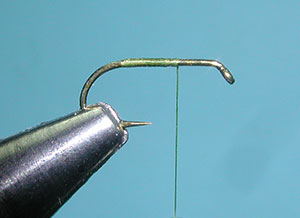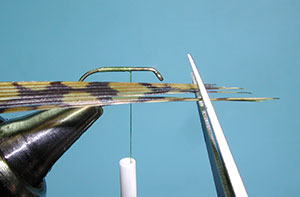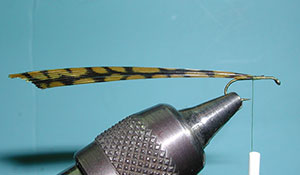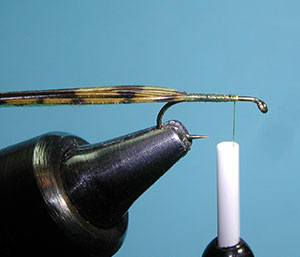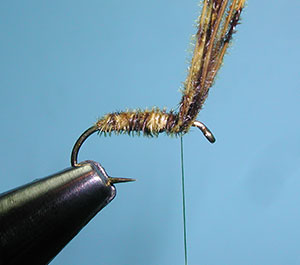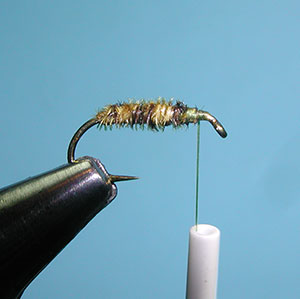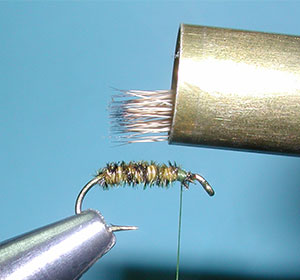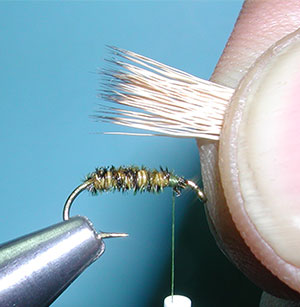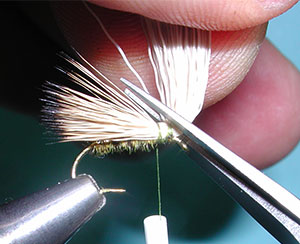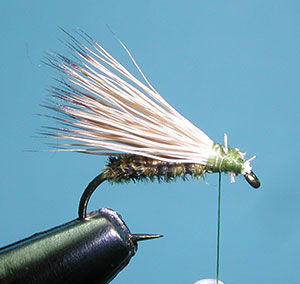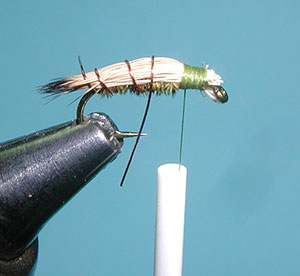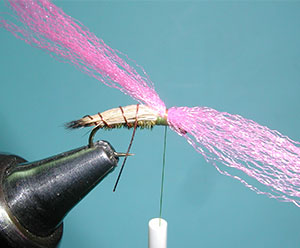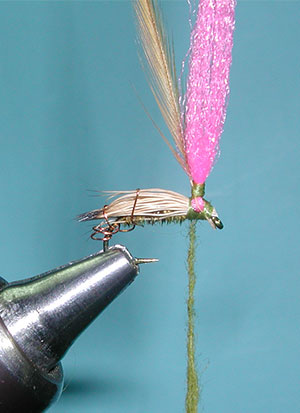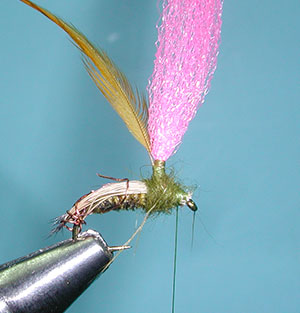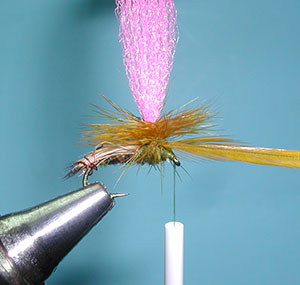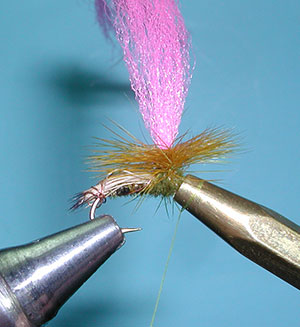Bloom’s Parachute Caddis

Parachute Caddis, Olive Brown
Tying Instructions
| Materials
to Order Material, click the link |
|
|---|---|
| Hook | TMC 921 #12-#18 |
| Thread | Veevus 14/0 Olive |
| Body | Golden Pheasant Tail, Olive Brown |
| Thorax | Hareline Dubbing, Olive Brown |
| Wing | Yearling Elk Hair, natural |
| Post | McFlylon, Cerise |
| Hackle | Medium Ginger |


David Bloom
Bloom’s Parachute Caddis
Bloom’s parachute caddis is designed by David Bloom, a guide on Montana’s Missouri River. The pattern can be tied in small sizes and adapted to a wide range of mottled coloration. Primarily, Yearling Elk Hair is used as the wing.It has a softer texture and thinner diameter which allows the hair to compress without extensive flaring. Since the tips of the hair taper quickly to a point, the hair provides good color banding to the pattern. Additionally, the yearling hair has good compression, and will create far less bulk than either bull or cow elk.
Hi-Vis Post
Bloom’s parachute caddis uses a Hi-Viz post of a floatable material such as McFlylon or Poly Yarn. With a low profile, the Hi-Viz post allows the angler to quickly spot it. The body material can be wide ranging. Dave prefers to use dyed Golden Pheasant tails from Nature’s Spirit. Golden Pheasant tails have a mottled pattern that exceeds that of the Ringneck Pheasant tails. However, you could use the other quill sections, such as Mottled Turkey, as well. Both Ringneck Pheasant and Golden Pheasant are dyed to many colorations that will match the actual insect.
Roped Body
Sometimes a ribbing is used to counter wrap the body. You can also incorporate the thread for ribbing with the Pheasant Tail section by creating a rope. Dave will use the tag end of his thread coming off the bend of the hook and utilize this tag end by twisting the body material around it like a rope prior to wrapping. It is a nice way to adapt the materials. The pattern rides low in the water, has great floatability, and can be easily seen due to the Hi-Viz Post. Finally, this is a great caddis pattern for our Sierran waters.
Variations

Parachute Caddis, Tan
| Hook | TMC #921 #12-#18 |
| Thread | Veevus 14/0 Gray |
| Body | Golden Pheasant Tail, Golden Yellow |
| Thorax | Hareline Dubbing, Hares Ear |
| Post | McFlylon, Cerise |
| Wing | Yearling Elk Hair, natural |
| Hackle | Golden Badger |

Parachute Caddis, Dark Olive
| Hook | TMC #921 #12-#18 |
| Thread | Veevus 14/0 Olive |
| Body | Golden Pheasant Tail, Muskrat Gray |
| Thorax | Hareline Dubbing, Dark Olive |
| Post | McFlylon, Orange |
| Wing | Yearling Elk Hair, bleached |
| Hackle | Brown Hackle |

